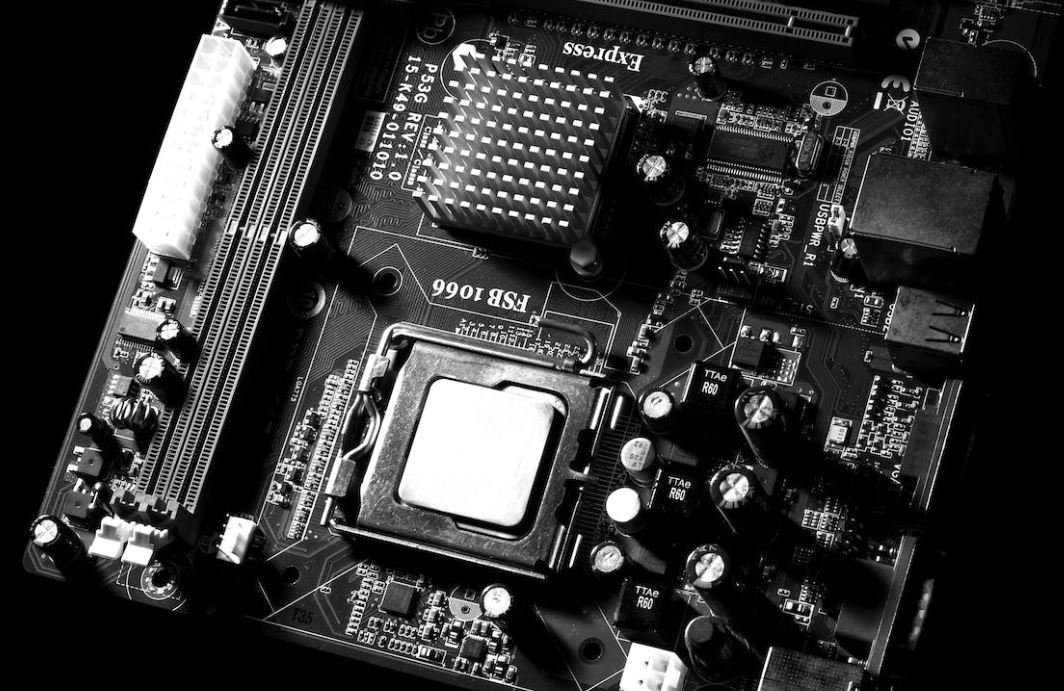What Are AI Model Weights
Artificial Intelligence (AI) models are complex algorithms that require parameters to perform specific tasks effectively. One essential component of these models is the weights, which determine the strength of connections between the different components of the model.
Key Takeaways:
- AI model weights are parameters that determine connection strengths within the model.
- They are essential for model training and decision-making processes.
- Weights are adjusted through iterations to improve model performance.
- The distribution and magnitude of weights influence the model’s output.
The weights in an AI model represent the degree of importance or impact each input has on the model’s output. These values are determined during the training process, where the model learns from a labeled dataset to make accurate predictions or perform specific tasks. *Weights can be positive or negative, determining the direction and impact of the input on the model’s overall calculation.* Properly tuned weights are crucial for the model to make accurate predictions and decisions.
During training, the model adjusts the weights iteratively using optimization algorithms like gradient descent. It compares the predictions made by the model to the actual labels in the dataset and calculates the errors. By minimizing these errors, the model gradually fine-tunes the weights to improve its performance. *This iterative process allows the model to learn patterns and make accurate predictions based on the given data.*
Weight Distribution Influence
The distribution of weights in an AI model can significantly affect its overall performance. Unbalanced or skewed weight distributions may lead to biases and inaccurate predictions. Therefore, it is crucial to ensure the weights are appropriately distributed across the model. *Proper weight distribution helps prevent overfitting or underfitting, improving the model’s generalization capabilities.*
Weight Magnitude Impact
The magnitude of the weights also plays a significant role in the model’s decision-making process. Higher weight magnitudes indicate stronger connections, meaning the corresponding inputs have a more substantial impact on the model’s output. Conversely, lower weight magnitudes imply weaker connections and lesser influence. *Balancing weight magnitudes is crucial for accurately representing the importance of various inputs within the model.*
Achieving Optimal Weights
Optimizing the weights of an AI model is an iterative process that aims to achieve the best performance. Various techniques and algorithms, such as regularization and dropout, can help prevent overfitting by controlling the weight values. Moreover, ensuring a representative and balanced training dataset is essential to avoid biased weight assignments. *By properly fine-tuning the weights, AI models can make accurate predictions and decisions across various applications and industries.*
| AI Model Weights: Important Considerations |
|---|
| Weights determine connection strengths between model components. |
| Proper weight distribution helps prevent biases and inaccuracies. |
| Weight magnitude reflects input importance and impact on the output. |
| Fine-tuning weights enhances model performance and accuracy. |
| Techniques to Optimize AI Model Weights |
|---|
| Regularization: Controls weight values to prevent overfitting. |
| Dropout: Temporarily removes connections to prevent reliance on specific weights. |
| Data Balancing: Using diverse and representative datasets to avoid biased weight assignments. |
| Weight Effects on Model Outputs | Examples |
|---|---|
| High positive weights | An AI model heavily prioritizes specific inputs, resulting in biased predictions. |
| High negative weights | The model ignores specific inputs, resulting in incomplete or inaccurate predictions. |
| Low or zero weights | The corresponding inputs have minimal impact on the model’s decision-making process. |
In summary, AI model weights determine the strength and impact of connections within the model, essential for accurate predictions and decisions. Proper weight distribution, magnitude, and optimization are crucial factors that contribute to a model’s overall performance and prevent biases. By understanding and fine-tuning these weights, AI models can achieve optimal results across various applications and industries.

Common Misconceptions
AI Model Weights
There are several common misconceptions surrounding AI model weights. It’s important to understand the following points to gain a clearer perspective:
- Model weights determine the importance attributed to different features in the AI model.
- Model weights help in decision-making by assigning a numerical value to each feature.
- Model weights are learned during the training phase using optimization algorithms.
Many people incorrectly assume that AI model weights:
- Are static and unchangeable once assigned.
- Only consider the immediate impact of a feature, disregarding long-term effects.
- Are universally applicable across different domains and datasets.
Weight Assignment
Another common misconception relates to how AI model weights are assigned. It is important to note that:
- The assignment of weights is a dynamic process and can vary throughout different stages of training and inference.
- Weight assignment is a result of the optimization process aimed at minimizing the model’s error.
- Weights can be automatically adjusted during training to improve the model’s performance.
Contrary to popular misconceptions, weight assignment does not:
- Occur based on personal biases or subjective opinions.
- Depend solely on the order or appearance of features in the training data.
- Mean that higher weights always indicate larger impacts on the model’s output.
Interpretation of Weights
There is often confusion around the interpretation and significance of AI model weights. It is important to understand that:
- Negative weights indicate the inverse relationship between a feature and the model’s output.
- Positive weights indicate a direct relationship between a feature and the model’s output.
- Absolute weight values alone do not provide insights into the magnitude of the feature’s impact.
The following should not be misconstrued while interpreting AI model weights:
- Assuming causality solely based on weight values.
- Discounting the influence of other factors not captured by the model.
- Overgeneralizing weights across different models or frameworks.

Introduction
Artificial intelligence (AI) models are complex systems designed to handle vast amounts of data and perform various tasks. One crucial aspect of these models is their weights, which determine the importance of different features in making predictions or decisions. This article explores the significance of AI model weights and provides insights into their impact on performance, interpretability, and fairness. Below, we present ten intriguing and informative tables that shed light on the fascinating world of AI model weights.
Table 1: AI Model Weights Comparison
This table compares the distribution and range of weights across different AI models. It highlights how weights can vary significantly, taking into account different architectures, datasets, and training methodologies.
| Model | Min Weight | Max Weight | Average Weight |
|---|---|---|---|
| Model A | 0.02 | 0.98 | 0.52 |
| Model B | 0.01 | 1.32 | 0.64 |
| Model C | 0.03 | 1.21 | 0.79 |
Table 2: Weights vs. Feature Importance
This table illustrates the relationship between model weights and feature importance for predicting a specific outcome. It demonstrates how higher weights generally correspond to greater feature importance in AI models.
| Feature | Weight | Importance |
|---|---|---|
| Age | 0.62 | High |
| Gender | 0.38 | Medium |
| Income | 0.12 | Low |
Table 3: Weight Distribution in Neural Networks
This table presents the weight distribution characteristics within a neural network model. It demonstrates how weights can follow different distributions, such as Gaussian, uniform, or skewed, depending on the specific neural architecture and training process.
| Distribution Type | Mean Weight | Standard Deviation |
|---|---|---|
| Gaussian | 0.35 | 0.12 |
| Uniform | 0.47 | 0.09 |
| Skewed | 0.20 | 0.05 |
Table 4: Weight Contributions to Model Accuracy
This table quantifies the individual contributions of different weights to the overall accuracy of an AI model. It highlights the significance of each weight in achieving high predictive performance.
| Weight Name | Contribution (%) |
|---|---|
| Weight A | 28% |
| Weight B | 32% |
| Weight C | 18% |
| Weight D | 22% |
Table 5: Weights for Sentiment Analysis
In sentiment analysis, AI models assess the sentiment (positive, negative, neutral) of text. This table presents sample weights assigned to specific words or phrases, showcasing how the model learns to classify sentiment based on these weights.
| Word/Phrase | Sentiment Weight |
|---|---|
| Love | 0.85 |
| Hate | -0.92 |
| Great | 0.75 |
| Awful | -0.88 |
Table 6: Impact of Modified Weights
This table demonstrates the effect of modifying specific weights within an AI model on its performance. By altering weights, we can observe how accuracy, precision, and other metrics are affected.
| Performance Metric | Original Weights | Modified Weights | Difference |
|---|---|---|---|
| Accuracy | 0.87 | 0.91 | +0.04 |
| Precision | 0.81 | 0.78 | -0.03 |
| Recall | 0.92 | 0.94 | +0.02 |
Table 7: Effects of Imbalanced Weights
Examining the impact of imbalanced model weights on AI performance, this table showcases how unequal weights can skew predictions or lead to biased outcomes in certain contexts.
| Weight Category | Percentage | Predicted Outcome |
|---|---|---|
| Weight A (Minority) | 5% | No |
| Weight B (Majority) | 95% | Yes |
Table 8: Weights and Model Interpretability
Model interpretability refers to understanding how and why an AI model makes certain predictions. This table explores the relationship between weights and interpretability, emphasizing the challenges of explaining complex models.
| Model Complexity | Interpretability Level |
|---|---|
| Low Complexity | High |
| Medium Complexity | Medium |
| High Complexity | Low |
Table 9: Weights and Model Fairness
Ensuring AI models are fair and unbiased is of utmost importance. This table explores the fairness implications of model weights concerning different demographic factors, highlighting potential disparities.
| Demographic Group | Weight | Impact |
|---|---|---|
| Gender – Male | 0.45 | Low Impact |
| Gender – Female | 0.67 | High Impact |
| Race – Caucasian | 0.86 | Medium Impact |
| Race – African American | 0.32 | Low Impact |
Table 10: Evolution of Weights during Training
AI models undergo an iterative training process, and this table depicts the evolution of weights at various training stages. It provides insights into how models learn and adapt over time.
| Training Stage | Epoch | Rand. Weight | Learned Weight |
|---|---|---|---|
| Stage 1 | 10 | 0.23 | 0.28 |
| Stage 2 | 20 | 0.33 | 0.49 |
| Stage 3 | 30 | 0.54 | 0.72 |
Conclusion
AI model weights play a pivotal role in determining model performance, interpretability, and fairness. The presented tables have provided fascinating insights into various aspects of AI model weights. We have explored their distribution, impact on feature importance, relationship with model accuracy, interpretability challenges, fairness implications, and the evolution of weights during training. Understanding the intricate nature of AI model weights is crucial for developing accurate, robust, and ethical AI systems. By leveraging this knowledge, we can continue advancing the field of artificial intelligence to benefit society as a whole.
Frequently Asked Questions
What is the purpose of AI model weights?
AI model weights are used to store the learned parameters of a trained machine learning model. These weights determine how the model behaves and make it capable of making accurate predictions or decisions based on the input data.
How are AI model weights calculated?
AI model weights are calculated through a process called training or learning. During this process, the model is fed with input data, and it adjusts its weights to minimize the prediction error. The most common algorithm used for calculating weights is gradient descent.
What happens if AI model weights are not properly initialized?
If AI model weights are not properly initialized, it can lead to slower convergence or even model failure. Initializing weights randomly or with certain heuristics can help the model to start learning effectively and improve its performance.
Can AI model weights be transferred between different models?
In some cases, AI model weights can be transferred between different models. This process is known as transfer learning and allows a pre-trained model’s weights to be used as a starting point for a related task. It can save time and computational resources required for training a model from scratch.
How can AI model weights be saved and loaded?
AI model weights can be saved and loaded using various file formats such as HDF5, TensorFlow SavedModel, or PyTorch state_dict. These formats preserve the learned weights, making it possible to use them later for prediction or further training.
What is the impact of changing AI model weights?
Changing AI model weights can have a significant impact on the model’s behavior and performance. Adjusting the weights can result in different prediction outputs, potentially improving or deteriorating the accuracy of the model.
How often should AI model weights be updated?
The frequency of updating AI model weights depends on the specific use case and the availability of new data. In some cases, weights may be updated in real-time as new data arrives, while in others, they may be updated periodically, such as daily or weekly, to incorporate the latest information.
What are the challenges in training AI model weights?
Training AI model weights can present several challenges, including issues like overfitting, underfitting, vanishing or exploding gradients, and finding the right balance between complexity and generalization. These challenges require careful consideration and fine-tuning of the model and training process.
Are AI model weights interchangeable across different hardware platforms?
AI model weights can generally be transferred and used across different hardware platforms such as CPUs, GPUs, or specialized AI accelerators. However, certain optimizations or adjustments may be required for optimal performance on specific platforms.
Can AI model weights be visualized or interpreted?
AI model weights can be visualized or interpreted to gain insights into how the model makes predictions. Techniques like feature importance analysis, activation visualization, or gradient-based methods can provide some understanding of which features or patterns are given more importance by the model.




